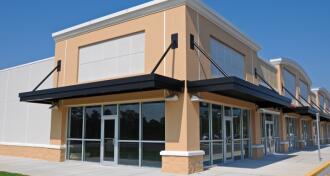Similar to a marriage, in which two parties come together to enter into a legally binding agreement, a commercial lease symbolizes a forged relationship between parties that can be enduring and rewarding, or short-sighted and emotionally and financially taxing.
In preparing and negotiating commercial lease agreements on behalf of my clients – either as landlord or tenant – I've come to understand that the most reliable predictor of a healthy landlord-tenant relationship setting clear terms for the arrangement up front, long before the tenant "moves in." Entering into a clearly drafted lease agreement at the outset helps to set expectations, which minimizes the possibility of disagreement on how to handle a challenge when it arises. In the interest of keeping your professional and contractual relationships healthy and fruitful, here are a few key elements that are often left unaddressed in commercial leases. When considered by the parties ahead of time (and usually with the guidance of effective brokers and attorneys) they lend a hand in creating a happy marriage between a landlord and a tenant:
Maintenance, Repairs, and Replacements
A common misconception between landlords and tenants is that defining a lease agreement as a "triple net" or "NNN" lease clearly defines the maintenance and repair obligations of both parties. In many leases, a tenant pays rent to the landlord, and the landlord pays the real estate taxes, property insurance, and capital improvements costs associated with the building A triple net lease, on the other hand, requires a tenant to pay rent as well as its share of real estate taxes, insurance, and common area/building maintenance charges. That being said, without clearly pronounced terms, a triple net lease agreement won't stop confusion or arguments from arising, even in the most common of scenarios.
Take the following examples: three months into a lease agreement, the HVAC unit in the building dies, and the roof begins to leak; or, two weeks after executing the lease, but before rent obligations become due, a tenant's engineer discovers that the building's foundation cannot support the construction buildout that the landlord is allowing the tenant to pursue at tenant's cost and that the septic field on the property is not of a sufficient size to handle the tenant's business operations and will need to be expanded. Who is responsible for addressing these issues with their time and money? Hopefully, the answer lies within the four corners of the lease agreement, so that the parties don’t have to argue or litigate with one another once a legal contract binds them.
Parking
For some reason, something as important as a tenant's access to parking on the property is often overlooked and unaddressed in commercial lease agreements. The parties focus on defining the leased space in terms of its legal address and square footage, but neglect to talk about whether the tenant will have on-site parking for its employees, customers, delivery vehicles, or none of the above. If the tenant does have access to parking rights, is it limited to a certain number of parking spaces? Are those spaces reserved and labeled or unreserved? Does the tenant have the right to put up signs letting its customers know that they can park there without concern for being towed or ticketed? Does the tenant have to pay extra for its parking spaces? Sometimes, the parking area is so large (or non-existent) that this just isn’t a concern. But most of the time, a parking lot of some size is available on the property, and the worst thing that either party can do is make assumptions about parking needs or access.
Permitted Use
A commercial lease's permitted use provision describes what type of business or operations a tenant can conduct on the property. It can seem like such a simple matter, and therefore can catch landlords and tenants off guard. First, regardless of what the parties agree to, hopefully, one of them (or their attorneys) has confirmed that the tenant's business operations will not conflict with the building's existing zoning classification. Next, the permitted use doesn’t need to be so detailed as to describe the tenant's day by day business operation, but shouldn't leave much to the imagination either. For example, as a landlord or tenant, you might feel satisfied that your draft lease states that tenant can operate a "restaurant" at the leased premises; but does this allow the tenant to sell alcohol and retail merchandise? Does it permit tenant to operate a brewery? If tenant operates a brewery, and the building has co-tenants, will the water bill be apportioned amongst tenants based upon the square footage of the building each tenant occupies, or will the brewer tenant need to install a separate water meter to keep up with its spike in water usage? If the permitted use is "office space," do the tenant's 85 part-time home-health aid employees come in and out of the building? Or will that much activity create a burden on the parking lot and elevators? I think you see where I'm going with this: a lease agreement is a "living, breathing" document that can be molded to fit the specific parties' needs, and a lease agreement worth its weight (and cost) will address these issues before they become vastly more expensive issues.
Personal Property, Subletting Rights, Required Hours, Building Rules, Rights of First Refusal, and the list goes on
As you can imagine, there are countless other considerations that landlords and tenants can take into account, which will allow them to serve as better landlords and tenants to one another. Good communication and a thorough commercial lease agreement will get them there. Effective brokers and attorneys will have seen so many of these business relationships and leases that they will be capable of reminding the parties to think of things that are otherwise innocently overlooked and ignored, such as:
- At the end of the lease term, what personal property items can the tenant remove, and which ones have become "fixtures" and must remain on the landlord's property?
- If the tenant realizes in year three of 10 that it doesn’t use all 3,000 square feet, can the tenant sublease 1,000 square feet to a separate business to run a coffee bar, and can the sublease be profitable to the tenant or must tenant turn over any rent monies collected to the landlord?
- Does the building have the overarching building "Rules and Regulations" applicable to all tenants, that requires tenants to abide by certain mandatory hours of operation?
- If the landlord wants to sell the leased space in year three of 10, does the tenant have the first crack at purchasing it? Can the landlord lease space in the same building to an unrelated party that runs the same kind of business operations as an existing tenant?
All of these questions can be addressed with creative thinking, clear communication, and experienced brokers and lawyers leading the parties to consider issues beyond lease term, rental costs, and security deposits. Ultimately, good communication and a thorough commercial lease agreement will lend the relationship a solid foundation from which to build upon—and hopefully, the landlord and tenant will live happily ever after.








